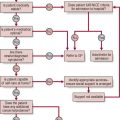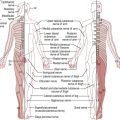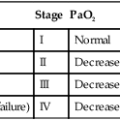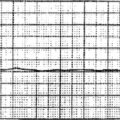Chapter 4 Case scenarios
4.1 Introduction
4.2 Case scenarios
Surgical example
• What type of assessment approach is appropriate for this situation?
• Suggest the main aim of your assessment at this stage?
• What assessment tools or other measurements might you need to use/obtain for this patient?
• What are the potential causes of this situation?
• What do you think is the main problem in the above-mentioned scenario?
Medical scenario
Some background information is provided as follows.
• Medical Research Council (MRC) breathlessness score: 4
• Observations and arterial blood gases (ABGs) on admission:
Physiotherapy assessment 1 (acute medical)
You are asked to assess this man shortly after his admission to the respiratory ward:
Physiotherapy assessment 2 (discharge assessment)
You are asked to re-assess Mr Smith in relation to discharge planning:
Neuromuscular scenario
• Lung function tests (last performed 2 months ago) (height 185 cm, weight 86 kg and BMI (body mass index) 25.1)
• Observations taken on admission (on air):
• What type of assessment approach is appropriate for this situation?
• Suggest the main aims and priorities of your assessment at this stage.
• What type of respiratory disorder does this show?
• Why does an individual with a neuromuscular disorder have respiratory problems?
• What are the implications of this disorder?
• What assessment tools or other measurements might you need to use/obtain for this patient?
4.3 Suggested answers
Surgical scenario (James Williams)
• What type of assessment approach is appropriate for this situation?
• Suggest the main aim of your assessment at this stage?
• What assessment tools or other measurements might you need to use/obtain for this patient?
• What are the potential causes of this situation?
• What do you think is the main problem in the above-mentioned scenario?
Medical scenario (John Smith)
Physiotherapy assessment 1 (acute medical)
• What type of assessment approach is appropriate for this situation?
• Suggest the main aims of your assessment at this stage.
• What assessment tools might you need to focus on with this man?
Physiotherapy assessment 2 (discharge assessment)
• What type of assessment approach is appropriate for this situation?
• What would be the main aim(s) of your assessment at this stage?
• What assessment tools are you likely to use now?
Physiotherapy assessment 3 (acute community)
• What type of assessment approach is appropriate for this situation?
• What would be the main aim of your assessment at this stage?
• What assessment tools are you likely to use now?
Physiotherapy assessment 4 (rehabilitation assessment)
• What type of assessment approach is appropriate for this situation?
• What would be the main aim of your assessment at this stage?
• What assessment tools are you likely to use now?
Neuromuscular scenario (Jack Jones)
• What type of assessment approach is appropriate for this situation?
• Suggest the main aims and priorities of your assessment at this stage.
• What type of respiratory disorder does this show?
• Why does an individual with a neuromuscular disorder have respiratory problems?
• What are the implications of this disorder?
• What assessment tools or other measurements might you need to use/obtain for this patient?

 26.6 mmol l−1
26.6 mmol l−1 30.8 mmol l−1
30.8 mmol l−1




